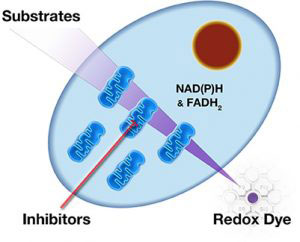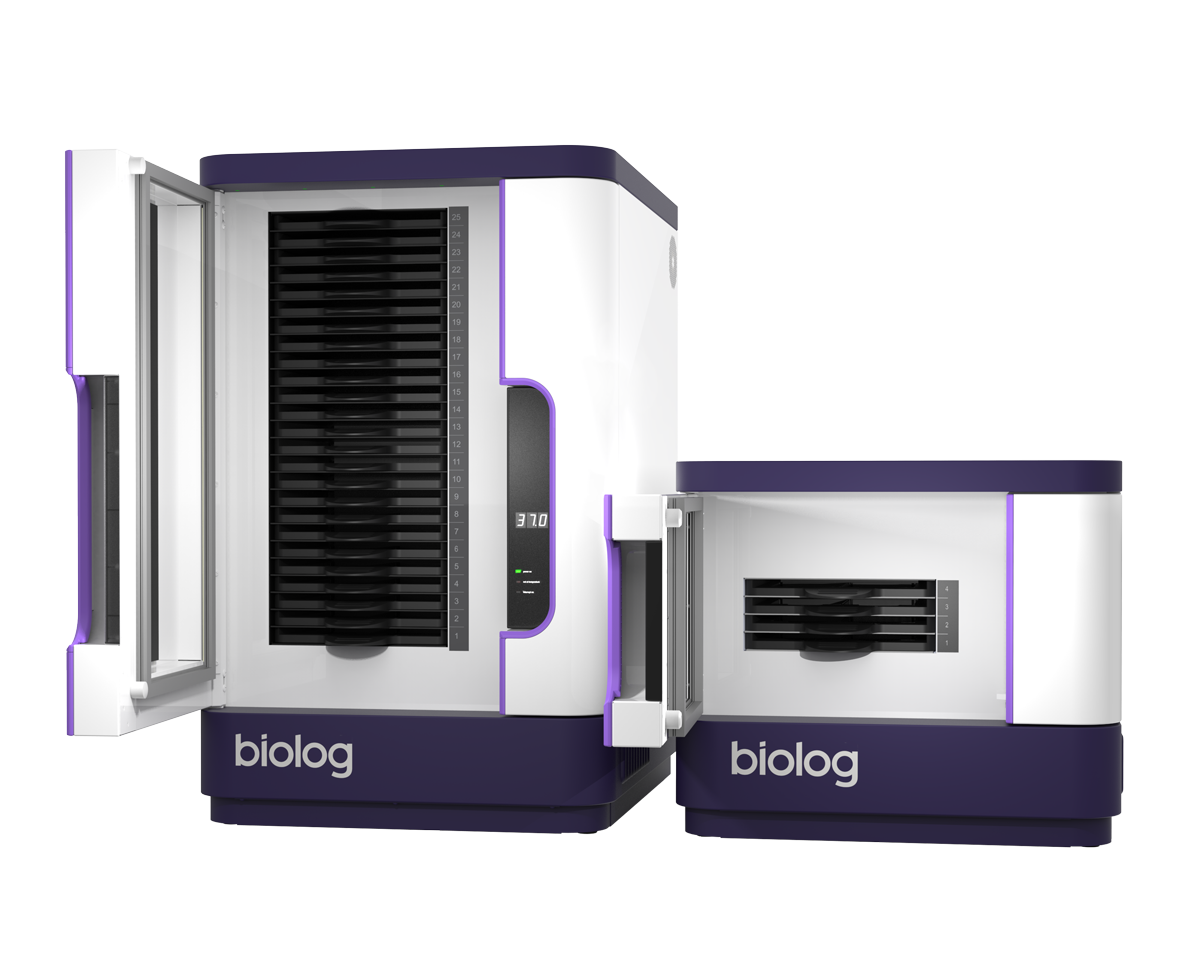
MitoPlate Phenotype
Mitochondrial Function Assays with MitoPlates
MitoPlates™ are cell-based phenotyping assays used to interrogate and characterize mitochondria. They use 96-well plates pre-loaded with tests designed to measure the effects of a diverse set of substrates and inhibitors on mitochondrial function. Any cell type of interest can be added to the plates along with Biolog’s proprietary redox dye. The generation of energy-rich NADH by the cells reduces the redox dye and brings about a color change which can be read and analyzed by Odin™.
processes
MitoPlates can be used to investigate how mitochondria change as a result of processes including
- Cell differentiation
- Cancer and aging
- Neurological disorders
- Metabolic disorders
- Immune cell activation arrayed in triplicate,
- Bacterial/viral infection
- Innate genetic defects
Certain metabolic substrates rely on different transporters to enter the mitochondria and different dehydrogenases to produce NAD(P)H or FADH2. Mitochondria are also sensitive to specific inhibitors. The MitoPlates consist of two panels, a substrate panel and an inhibitor panel. Together these panels can be used to characterize mitochondria in novel ways, including drug sensitivity, rates of metabolism, and effects of mutations in mitochondria-related genes.
Assay Principles
VIEW THE MITOPLATE PROTOCOL STEPS
Phenotypic Analysis with Odin
When using Phenotype MicroArrays, you need an instrument that will read at the right wavelengths and measure the changes kinetically over time at short intervals. You also need a software package to help you analyze all that data and identify the differences between your samples. With the Odin™ platform you can characterize phenotypes by monitoring growth curves and cell metabolism kinetics for microbial or mammalian cells for up to 50 plates at the same time. When combined with Phenotype MicroArrays, Odin can analyze up to 4,800 conditions unattended for hours or days.


Checking for Growth with odin
See what’s happening in two ways.
Odin measures a reporter dye over time at one wavelength to measure NADH production, effectively reporting the rate of metabolic respiration.
It also measures optical density (OD) at a second wavelength to determine how quickly the microbes are dividing. Taken together, you get a full picture of how your microbes grow best over time.
If you’re focused on cell growth, just leave the dye out. Odin automatically compares cell growth and metabolic activity curves to provide you with a clearer picture of how fast or slow your microbes are growing.

